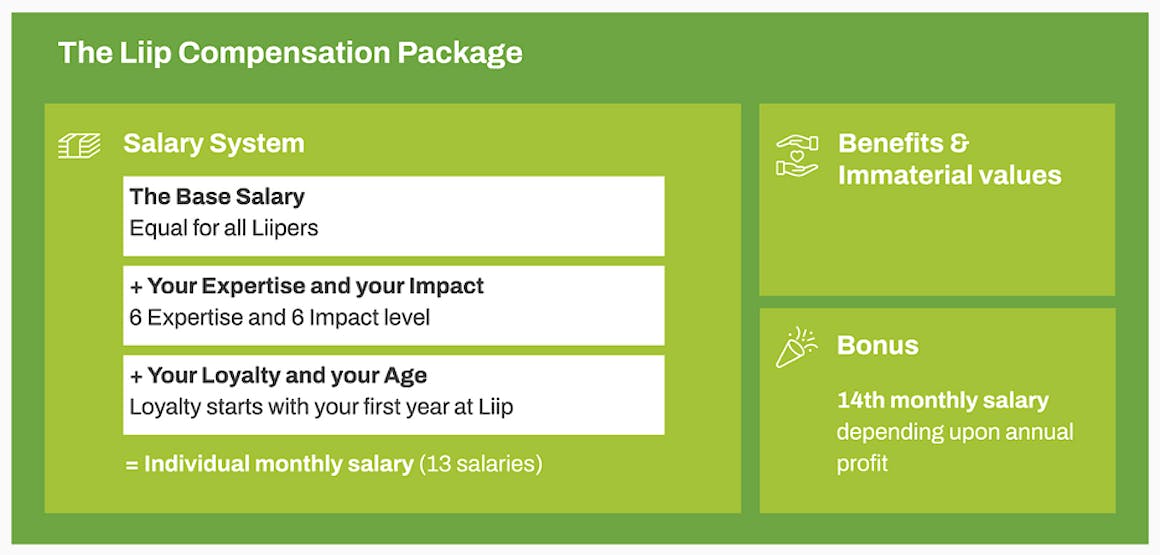When Self-Management Gets Real: Two Lessons You Can Steal

Most companies like the idea of self-management. Few dare to take it seriously. And even fewer survive the messy middle, where theory painfully collides with reality.
Today, I want to take you inside two pioneering European companies. Both decided to rip up the rulebook and give people real autonomy. What they learned along the way? Lessons you want to steal.
Liip: Putting their money where their mouth is
At most companies, salaries are shrouded in secrecy. They’re whispered about in corridors, negotiated behind closed doors, and guarded like nuclear codes.
The result? Lack of trust, gossip, and wild assumptions.
Liip, a Swiss digital agency with 220 people, said: screw that.
If you claim to trust people to manage themselves, how can you justify hiding one of the most important levers of fairness?
So, in 2022, they refined what they call ‘the Liip Deal’: a radical, transparent approach to pay.
Here’s how it works.
Everyone starts with the same base salary, pegged to the market. From there, your pay evolves based on three things: your expertise, your impact, and your loyalty (time at the company).
No negotiations, no politics, no corner offices that magically boost your paycheck.

But the real magic is in how salaries are set. You assess yourself. Then three of your peers weigh in. Finally, the results are shared at a “salary conference.”
Even the founders go through it.
And there’s a cap: the highest-paid person at Liip can earn only three times more than the lowest-paid. Not exactly what you’ll find at your average agency.
The result?
Pay is no longer a taboo subject. It’s a living, transparent system that belongs to everyone. It turns one of the trickiest, most political parts of company life into a showcase of trust in action.
Hypoport: More structure, not less
Now, contrast that with Hypoport, a financial services group in Germany with 2,000 employees.
When they first embraced self-organization, the energy was electric. Leaders thought: finally, I can step back—people will take care of themselves. Employees thought: finally, I can do whatever I want.
You can guess what happened next.
Within months, the place slipped into chaos. Decisions were avoided. Responsibilities blurred. What was supposed to be empowerment turned into… anarchy.
The hard truth they stumbled into:
Self-organization doesn’t mean less structure. It means more.
So they turned to Holacracy. Quickly, the game changed:
- Job titles were swapped for roles, each with a clear purpose and accountabilities.
- Meetings split into two types: one for getting work done, one for improving the system.
And slowly, something shifted.
Instead of looking up and asking, “What does my boss want?”, people started asking, “Does this serve the purpose of my role?”
It wasn’t quick.
It wasn’t smooth.
But today, Hypoport shows that even at scale (across nine subsidiaries) you can create coherence without control.
Want to dive deeper into these cases? Our friends at Talkspirit pulled them together in the Self-Management Blueprint. It’s based on real-world experiences at Liip, Hypoport, and ORS Group, and it’s packed with practical detail.
From ideas to practice
Liip and Hypoport prove that self-management isn’t about fluffy theories. It’s about building systems and structure that allow for autonomy and purpose.
For Liip, that meant (among many other things) dragging pay out of the shadows.
For Hypoport, it meant (among many other things) adding peer processes where hierarchy once ruled.
Both remind us: self-management doesn’t have to be chaos. However, it does require thoughtful design.
It’s what we teach in our Masterclass (next cohort kicks off on September 26).
Check out the Masterclass here.
PS: Transparency note: This is a paid collaboration with Talkspirit. We only partner with tools that genuinely support self-management, and theirs is often the invisible backbone that powers pioneers like Liip and Hypoport. If you’re curious, their full the Self-Management Blueprint is worth a read.

